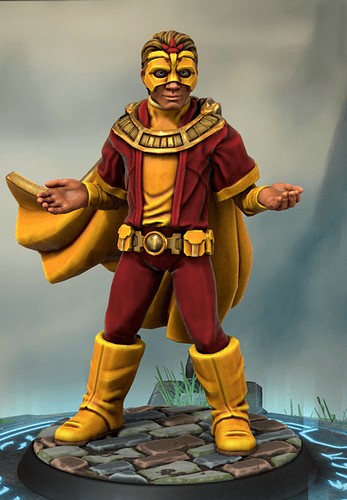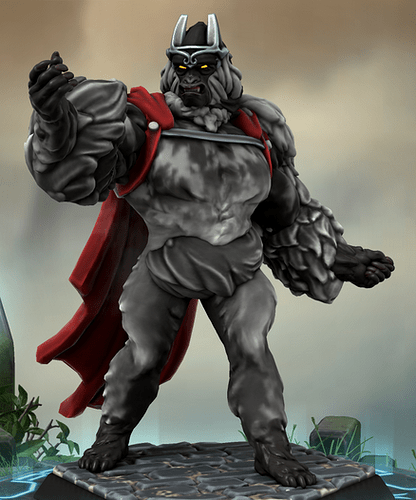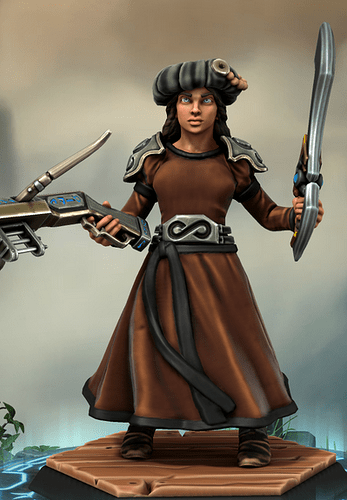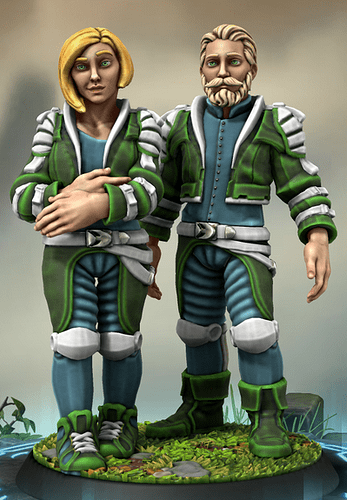True. What I should have said is that “pure” clockwork dimensional science is rare; it’s usually tacked on as part of a steampunk element, and that’s a good two centuries ahead of the aesthetic of a pure clockwork creation.
The Randomizers:
Background 4, 1, 5 [Options: Blank Slate, Military, Academic, Upper Class, Tragic]
Power Source 8, 1, 2 [Options: Accident, Training, Genetic, Powered Suit, Radiation, Tech Upgrades]
Archetype 9, 6, 1 [Options: Speedster, Close Quarters Combatant, Armored, Elemental Manipulator, Robot/Cyborg, Wild Card]
Personality 2, 10, 4 [Options: Natural Leader, Mischievous, Distant, Alluring, Nurturing, Decisive]
The Venturers
Real Names: Seamus Pool, Loretta Pool, Peter Wolfe, and Jane Malcolm, First Appearance: Venture into the Unknown #56, March 1964
Background: Academic, Power Source: Training, Archetype: Wild Card, Personality: Decisive, Primary Principle: Liberty
Status Dice: Green d8, Yellow d8, Red d10. Health: 34 [Green 34-26, Yellow 25-13, Red 12-1]
Qualities: [Mental] d12, [Physical] d10, History d8, Banter d8, Part of the Team d8
Powers: Intuition d10, [Athletic] d8, Presence d8, Vitality d6, Gadgets d6
Unique Traits:
- Seamus: Investigation, Close Combat, Strength, Principle of the Mentor
- Loretta: Conviction, Acrobatics, Speed, Principle of Speed
- Peter: Creativity, Finesse, Vitality, Principle of Mastery
- Jane: Alertness, Ranged Combat, Agility, Principle of the Tactician
Green Abilities:
-
Put Your Mind To It [A]: Take any two different basic actions using [Your Mental Quality], each using your Min die.
-
Get In Their Faces [A]: Take any basic action using [Your Athletic Power]. Then roll a d6. On 1, Boost with your Min die. On 2, Hinder with your Min die. On 3, Defend with your Min die. On 4, lose Health equal to your Min die. On 5, your basic action uses your Max die. On 6, your basic action uses your Min die.
-
Principle of Liberty [A]: Overcome in a situation where you are restricted or bound and use your Max die. You and each of your allies gain a hero point.
-
(Seamus) Principle of the Mentor [A]: Overcome a challenge that someone else younger already tried and failed. Use your Max die. You and each of your allies gain a hero point.
-
(Loretta) Principle of Speed (I): When you successfully Overcome, you may end up anywhere in the current environment. You and each of your allies gain a hero point.
-
(Peter) Principle of Mastery [A]: Overcome in a situation that uses your powers in a new way and use your Max die. You and each of your allies gain a hero point.
-
(Jane) Principle of the Tactician [A]: Overcome when you can flashback to how you prepared for this exact situation. Use your Max die. You and each of your allies gain a hero point.
Yellow Abilities:
- Here To Fight [A]: Attack multiple targets using [Your Athletic Power]. If you roll doubles, one nearby ally is also hit with the Attack.
- Always Be Ready [A]: Boost yourself using Intuition. That bonus is persistent and exclusive. Then, Attack using your Min die. You may use the bonus you just created on that Attack.
- Quick Thinkers [R]: When you are attacked by a nearby enemy, the attacker also takes an equal amount of damage.
Red Abilities
- Problem-Solvers [A]: Overcome using [Your Mental Quality]. Use your Max+Min dice. Hinder all nearby opponents with your Mid die.
- Inspire The Team [A]: Make a basic action using Banter. Use your Max die. All other heroes who take the same basic action on their turn against the same target receive a Boost from your Mid+Min dice.
Out
- Boost an ally by rolling your single Intuition die.
In 1964, with their lines rapidly expanding and the company back on solid footing, the venerable editor-in-chief of Venture Comics, Joe Manzetta, decided to pitch the team that he knew would be the next grand success to build on the growth of the previous year. He delivered a set of notes to the team behind Venture into the Unknown and informed them that it was high time that Venture had a set of heroes named after the company, and what better place for it than the pages of the anthology that had put them back on the map?
And so the Venturers were born. Led by square-jawed anthropologist Seamus Pool, the four were a team of researchers and explorers searching the forgotten corners of the Earth, tangling with dangerous aristocrats, cruel cults, and mysterious monsters as they used their wits and their science to solve problems and save the day.
In addition to Seamus, the Venturers were made up of his sister Loretta, their good friend Peter Wolfe (who carried a torch for Loretta), and the brilliant but cold-hearted administrator attached to the team, Janet Malcolm. When danger threatened, they would climb into their custom jet and respond - or they would simply be investigating some forgotten temple only to find it under attack by enemy scientists or magicians.
While the Venturers were interesting enough as a high concept, they had two major problems stacked against them. The first was that, despite having roles on the team staked out, they were essentially the same character personality-wise - four archeologist-adventurers with quick wits and gadgets who reacted to trouble with decisive certainty and a love of liberty. Janet was the closest to unique, being more of a foil to the other three, but even then most of her dialogue was interchangeable with her peers.
The second problem was that the Venturers were closer to pulp heroes than superheroes, and the readers of Venture Comics just weren’t that into the pulps any more. Fancy toys and trick shots didn’t measure up to Celtic demigods and robot suits, and even if the opponents of the Venturers were more traditional supervillains, they just weren’t that exciting on the page.
Despite this, most issues of Venture into the Unknown featured the Venturers either as the main story or a backup throughout 1963-1964, and they appeared in crossovers with Skybreaker, Wonderer, and Reverie during that time. Finally, as sales for Venture into the Unknown began to slump, Manzetta accepted that his dream simply wasn’t going to happen, and he allowed the Venturers to be quietly retired in late 1965, leading to the comic becoming almost exclusively a venue for heroic crossovers. The experience was rumoured to be shattering to the man, leading to his retirement and replacement by soon-to-be-legendary editor-in-chief Harold Mossby the next year.
As for the Venturers themselves, no one was really excited enough about them to revive them in the Bronze or Iron Ages. Individual members appeared in various places in Plutonium Age comics, ironically more interesting than when they were together, but always in smaller supporting roles.
Behind the Scenes
I’m being weird again! I specifically said that I wasn’t going to do this. But I did. I built four heroes in a single hero slot.
The Venturers function by just overwhelming the field with low-level actions until everything is swept away. Some of them will create small boosts so that when the group hits Yellow everyone can develop a big boost, at which point they can constantly decide which Min die effects become viable. Some of them will Attack and Hinder. Some of them will just do a random thing. And it’s never the same someone in any given role. In theory, they each have a team purpose; Seamus gets up in people’s faces and figures out situations, Loretta races through, Peter hangs back and applies creative solutions, and Jane keeps overwatch and provides support. But in practice? Anything goes.
I honestly think this might be a playable team, although it would definitely be a weird experience. They’re one part Challengers of the Unknown and one part Fantastic Four… but without anything to really set each of them apart from one another.

 But it really does depend on the group and how they approach role-playing.
But it really does depend on the group and how they approach role-playing. 

 “Integrity” is a marvelously bad name for a superhero name, and it gets even worse when you realize it’s a double entendre! XD Love the arc of his story, though, a heel-turn that couldn’t have happened to a nicer guy.
“Integrity” is a marvelously bad name for a superhero name, and it gets even worse when you realize it’s a double entendre! XD Love the arc of his story, though, a heel-turn that couldn’t have happened to a nicer guy.


